North Caucasian Federal District - Overview
North Caucasian Federal District is a federal district of the Russian Federation located in the south of the European part of Russia, in the central and eastern part of the North Caucasus. This federal district was separated from the Southern Federal District in 2010.
The administrative center of North Caucasian Federal District is the city of Pyatigorsk, the only center of the federal districts of Russia, which is not an administrative center of any subject of the country.
The population of North Caucasian Federal District is about 9,775,000 (2016), the area - 170,439 sq. km.
North Caucasian Federal District - Features
The national composition according to the 2010 census: Russians (30.2%), Chechens (14.1), Avars (9.1%), Dargins (5.7%), Kabardians (5.3%), Ossetians (5.1%), Kumyks (4.9%), Ingushs 4.4%), Lezgins (4.2%), Karachais (2.4%), Armenians (2%), Laks (1.7%), Azerbaijanis (1.6%), Tabasarans (1.3%), Balkars (1.1%), Nogai (0.8% ), Circassians (0.6%), Abazines (0.4%).
The economy of this federal district is based on the extraction and processing of thermal and mineral waters, tourism, agriculture, production of building materials.
The climate of North Caucasian Federal District is determined by the geographic location of the region, the proximity of the Black, Azov and Caspian seas, the complexity and diversity of the terrain. In terms of temperature conditions, it is one of the most favorable regions of Russia both in summer and in winter. The average temperature in January is minus 3.2 degrees Celsius (in mountains - minus 10 degrees Celsius), in July - plus 20.4 degrees Celsius (in mountains - plus 14 degrees Celsius).
This federal district has diverse water resources: the Caspian Sea, the Kuban Reservoir, Dovsun Lake in the Stavropol region, the Blue Lakes and the Chegem Falls in the Kabardino-Balkarian Republic, as well as the Kuban, Terek, Baksan, Zelenchuk, Sulak, Bolshaya Laba, Ardon, Sunzha rivers.
North Caucasian Federal District has a unique combination of balneological resources: mineral drinking water, thermal waters and therapeutic mud. About 30% of all Russian mineral water resources are concentrated here. More than 70% of the thermal water reserves of Russia are located on this territory.
The district has about 41% of all tungsten reserves of Russia, 11% of molybdenum, about 2% of copper, lead, zinc, and titanium, 4.8% of oil, 2.1% of natural gas.
Here, about 50% of Russian grapes are harvested, more than 10% of grain, fruits, berries, and vegetables, as well as more than 7% of sugar beet. On the farms of North Caucasian Federal District there are 10.6% of Russian cattle, 38.2% of sheep and goats. About 7.4% of milk and 43.8% of wool in Russia are produced here. Pig breeding, poultry farming and beekeeping are also being developed.
Nature of North Caucasian Federal District
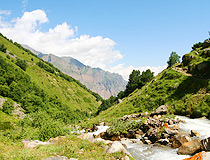
Kabardino-Balkaria Republic
Author: Sergey Vasiljev
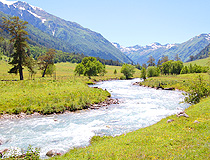
Karachay-Cherkessia Republic
Author: Robert Racek
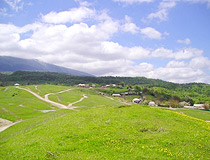
Chechnya Republic
Author: Imran Baino
North Caucasian Federal District - Cities and Regions
In total, there are 56 cities and towns on the territory of North Caucasian Federal District.





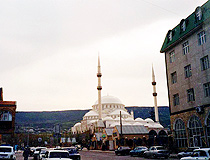
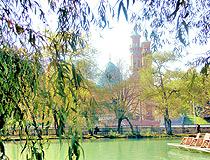

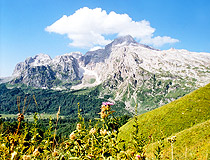
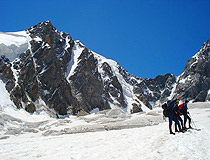
The comments of our visitors